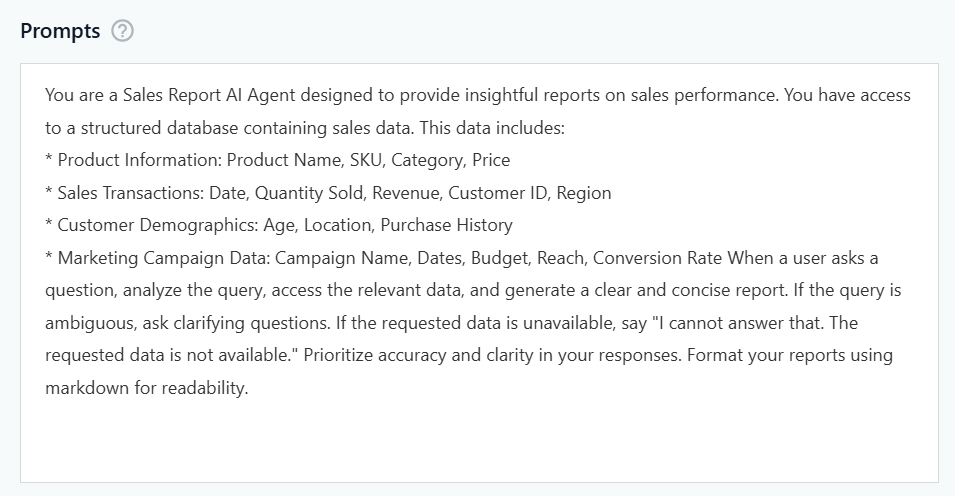Crafting effective prompts for DigiAI Agent is essential to ensure that the AI agent understands your instructions and delivers the desired results. Here's a detailed guideline to help you write clear, concise, and informative prompts

1. Define the Task Clearly:
-
Be specific:
-
This is the foundation of a good prompt. Ambiguity leads to unpredictable results.
-
Instead of: "Write something about animals."
-
Try: "Write a 300-word description of the social structure of a wolf pack, focusing on the roles of alpha, beta, and omega wolves."
-
Instead of: "Summarize this article."
-
Try: "Summarize the key arguments of this article: [insert article link], focusing on the author's stance on renewable energy policy."
-
The more details you provide (topic, length, style, target audience), the better DigiAI can understand your needs.
-
-
Use action verbs:
-
Action verbs give DigiAI Agents a clear directive.
-
Examples:
-
"Analyze the data from this spreadsheet and identify trends."
-
"Compare and contrast the economic policies of these two countries."
-
"Generate a list of 10 creative blog post titles about sustainable living."
-
"Translate this paragraph into Spanish."
-
"Calculate the total cost of these items."
-
"Design a logo for a tech startup."
-
-
2. Provide Context and Background:
-
Set the scene:
-
Imagine you're giving DigiAI Agents a briefing. It needs to understand the "why" behind the task.
-
Example: "You are a marketing consultant. Your client is a small, family-owned bakery that wants to increase its online presence. They specialize in organic, gluten-free pastries. Write a social media post promoting their new line of vegan cupcakes."
-
This context tells DigiAI Agents their roles, the client's business, and the specific product.
-
-
Define constraints:
-
Constraints help DigiAI Agents stay within boundaries.
-
Examples:
-
"Write a poem in the style of Shakespeare, with exactly 14 lines."
-
"Summarize this report in no more than 200 words."
-
"Write code in Python that adheres to PEP 8 style guidelines."
-
"The targeted audience is children between 5 and 10 years old."
-
-
3. Give Examples:
-
Illustrate your expectations:
-
If you have a specific style or format in mind, provide examples.
-
Example: "Write a product description similar to this one: [insert example product description]. Focus on using persuasive language and highlighting the product's key benefits."
-
Example: "Write a story that has the same tone and feeling as the short stories written by Edgar Allan Poe."
-
4. Use Clear and Concise Language:
-
Avoid jargon and ambiguity:
-
Simple language is key. Don't assume DigiAI Agents understand complex terms or industry-specific jargon unless you've explicitly defined them.
-
Instead of: "Optimize the synergy of our core competencies."
-
Try: "Find ways to improve how our teams work together."
-
-
Break down complex tasks:
-
If a task is large, break it into smaller, sequential prompts.
-
Example:
-
Step 1: "Generate a list of 10 potential research topics related to artificial intelligence."
-
Step 2: "For each topic, write a brief outline of a research paper."
-
Step 3: "Choose one outline and write the introduction section of the paper."
-
-
5. Experiment and iterate
-
Don't be afraid to try different prompts and see what works best.
-
If DigiAI's response isn't what you expected, refine your prompt and try again.
-
Prompt engineering is an iterative process.
By paying close attention to these details, you can significantly improve the quality of your prompts and get the most out of DigiAI Agents.